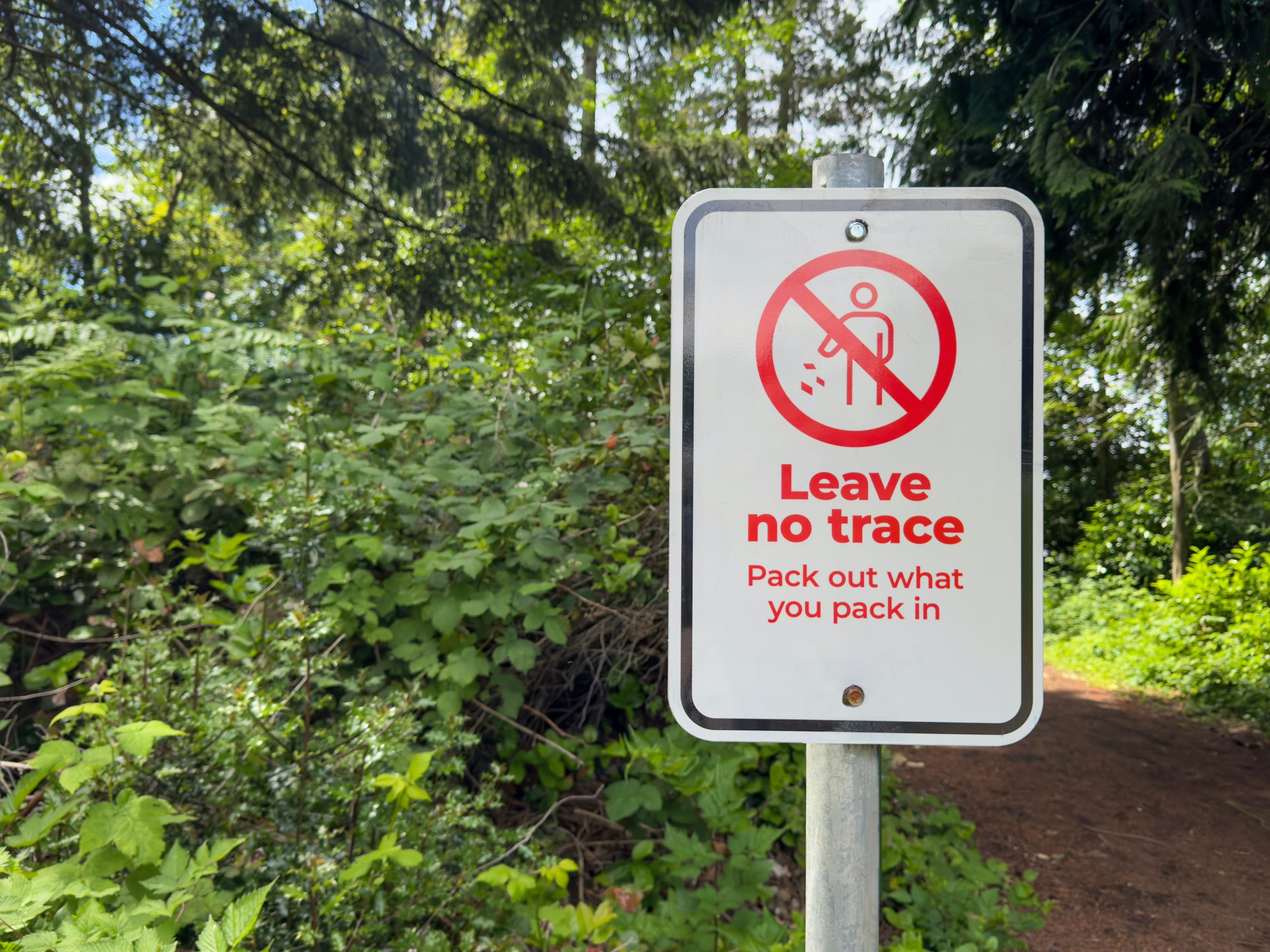As sustainable camping becomes more popular, so does the desire to treat nature with the respect it deserves. But even with the best intentions, many campers, hikers, and RV travelers wonder: Am I doing this right? That’s where the Leave No Trace philosophy comes in—a simple yet powerful set of guidelines designed to help us protect natural spaces while still enjoying them.
In this Earth Day edition of our blog series, we’re diving into Leave No Trace questions and answers—covering what the policy is, where it came from, how to follow it, and how to play your part in keeping the wild truly wild.
What Is Leave No Trace?
The Leave No Trace movement was developed in the 1980s as a response to the growing impact of outdoor recreation on public lands. As more people ventured into national parks, forests, and wilderness areas, land managers noticed trails becoming degraded, wildlife becoming disturbed, and waste piling up.
To combat this, the Leave No Trace Center for Outdoor Ethics formalized a set of seven principles to help people minimize their impact on the outdoors. These principles are now widely adopted by campers, hikers, RVers, and even large organizations like the National Park Service.
The 7 Principles of Leave No Trace
If you’re aiming for more sustainable camping, these seven rules are a great place to start:
- Plan Ahead and Prepare
Know the area, weather, and regulations. Being unprepared can lead to careless mistakes that harm the environment. - Travel and Camp on Durable Surfaces
Stick to trails and designated campsites to avoid damaging sensitive ecosystems. - Dispose of Waste Properly
Pack out all trash, leftover food, and even biodegradable waste. If you pack it in, pack it out. - Leave What You Find
Resist the urge to take souvenirs like rocks or wildflowers. Preserve nature for others to enjoy. - Minimize Campfire Impact
Use a camp stove instead of an open flame when possible. If fires are allowed, use established fire rings and burn only small sticks from the ground. - Respect Wildlife
Observe animals from a distance, never feed them, and keep your campsite secure to avoid attracting critters. - Be Considerate of Other Visitors
Let nature’s sounds prevail. Avoid loud music or disruptive behavior so everyone can enjoy the peace of the outdoors.
Why It Matters
The Leave No Trace principles help maintain the beauty, biodiversity, and health of outdoor spaces. Even a single person stepping off trail or leaving behind waste can have ripple effects on fragile habitats. Multiply that by thousands of visitors each season, and the damage becomes clear.
Practicing sustainable camping through Leave No Trace helps reduce erosion, prevent wildfires, protect wildlife, and keep trails clean—not just for now, but for future generations.
What to Do if Others Don’t Follow the Rules
Sometimes, you may encounter other campers or hikers who aren’t following Leave No Trace principles. Here’s how to handle it:
- Lead by example. A clean, well-managed campsite sends a quiet message.
- Politely educate. If it feels safe, offer a gentle reminder or share a quick tip like, “Hey, did you know that feeding wildlife can be dangerous for them?”
- Report serious issues. If you witness vandalism, wildlife harassment, or illegal dumping, report it to local park rangers or land management agencies. Most parks have hotlines or visitor centers that accept tips.
Common Leave No Trace Questions and Answers
Q: Is it okay to bury food scraps?
A: No—burying food can attract wildlife and disrupt the ecosystem. Always pack out food waste.
Q: Can biodegradable soap be used in streams?
A: Biodegradable or not, soap should never be used directly in water sources. Use it at least 200 feet away and in small amounts.
Q: What if there are no trash bins at the campsite?
A: You should always be prepared to carry your trash out with you. Pack a sealable trash bag and take it with you until you find a proper disposal site.
Leave No Trace Questions and Answers: The Bottom Line
Whether you’re backpacking through national parks or rolling up in your camper, practicing Leave No Trace is a simple way to make your trip part of the solution—not the problem. It’s one of the most important aspects of sustainable camping, helping protect the landscapes we all love.
And no matter how lightly you travel, the unexpected can still happen. Protect your adventure—RV, boat, or powersport vehicle included—with Happy Camper Insurance. Our team is here to help make your sustainable camping experience safe, smart, and fully covered.



